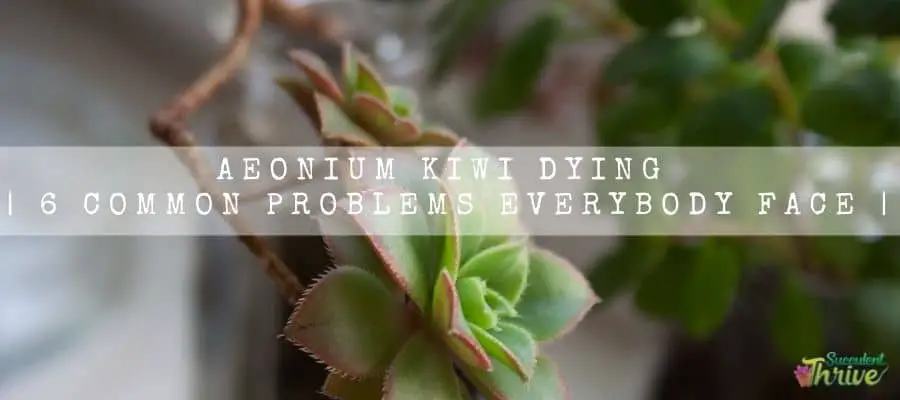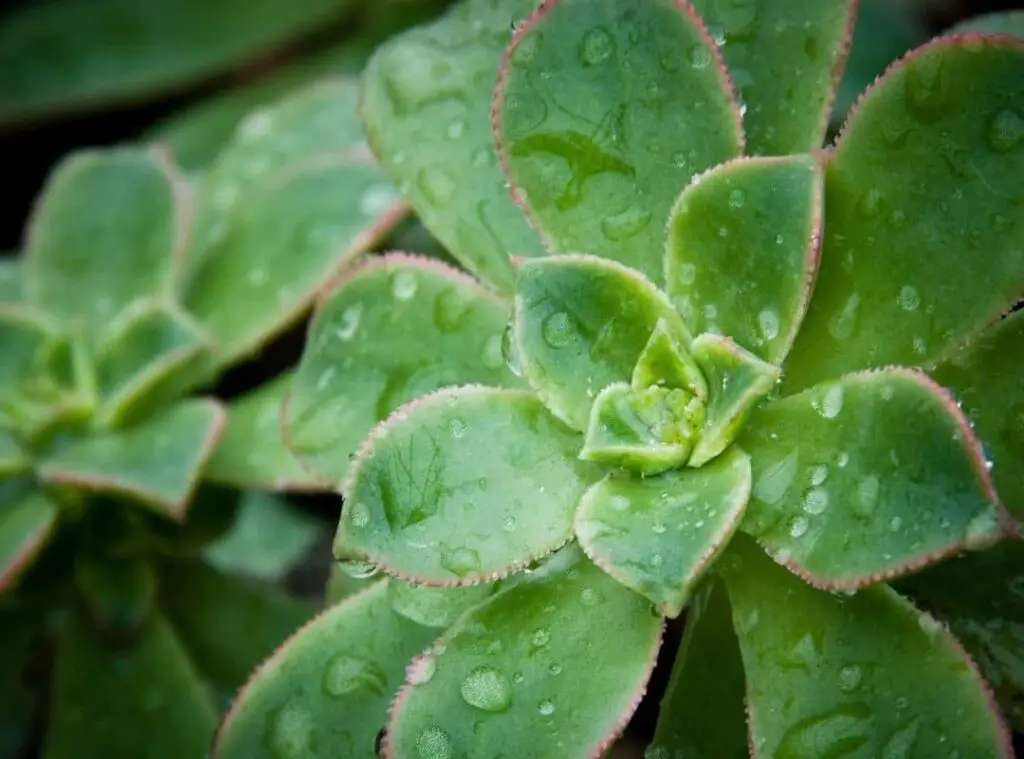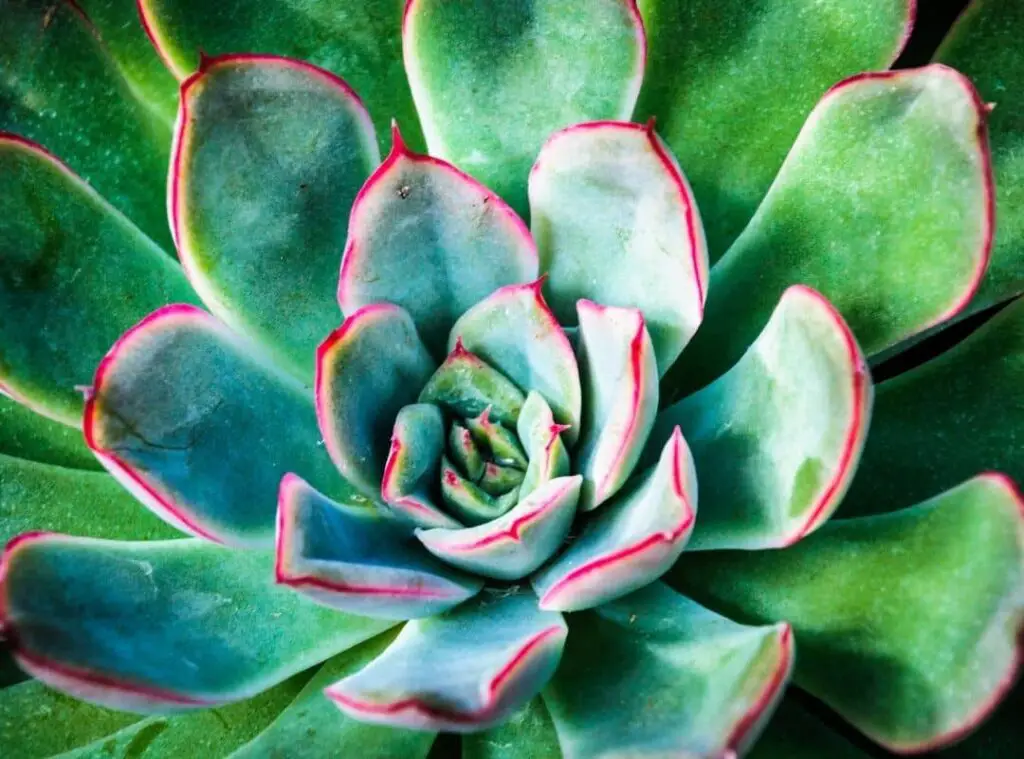Is your Aeonium kiwi dying? There would be several reasons such as pests’ attacks and diseases. These plants are prone to get infected by several pest species.
However, in case your plant gets affected with pests and diseases you could still save them if you attend to them immediately.
So let us find out reasons and how you can save your dying succulent.

Mealy bugs attack
These tiny, fuzzy creatures are white in color. They usually crawl all over the plant. The white patches in the plant would be the initial sign of mealybug attack.
Whenever you spot these early indications, you should isolate the affected plants from the others. In the meantime, check whether any of the other plants have got mealybug infestation.
Chances are that they could have also got affected since mealybugs could spread faster from one plant to another.
They could be so dangerous as they could occupy even the small areas and you will not be able to even identify them at once.
To remedy them, you could treat them with rubbing alcohol. You simply have to take a q tip and dip in alcohol and apply it on the bug areas.
It would kill them easily. Further I would recommend watering the soil with rubbing alcohol as that would help to kill whatever the eggs remain in the soil.
You do not have to worry about watering them with alcohol as it would not harm the plant, instead it would kill the eggs in the soil.
I would recommend doing this for several days as it could take a little while to get rid of them completely.
Aphids infestation
These are tiny creatures which you could spot in green or in black colors. They usually suck the plant sap.
You could locate them mostly on the undersides of the plant leaves. At first, they would form a white substance which could transform into mold later.
You could treat the aphids attack with dish soap and with water which will act as a soapy solution. You simply have to spray it on the bugs wherever you spot them.
This is also not harmful for the plant. Alternatively, you may also consider using a diluted neem oil and apply it on the leaves.
To be precise you could add 1 tablespoon of neem oil with 8 cups of water and spray it on your plants.
I would suggest you continue doing these remedies for several weeks for once every 2-3 days.

Aeonium kiwi leaves falling
Natural causes
Aeonium kiwi plants naturally drop their bottom leaves once they grow new leaves. Having said, if you spot your kiwi plant is dropping its top leaves, it could be mainly due to the irregular watering.
Underwatering
Under watering could cause the kiwi plants to drop their leaves. if you realize under watering has caused them to drop their leaves, you need to immediately commence watering them thoroughly.
Over watering
Over watering could also cause these plants to drop their leaves. If you spot your bottom leaves are mushy and translucent, most probably they will end up getting dropped on the ground.
Despite the fact that kiwi plants would prefer some moisture in the soil, they would still not prefer to get excess water as they are pron for root rots.
To treat it, you need to take off the plant and get rid of the old soil and rotten stem parts. After that let those cuttings become dry.
Next you could plant them in a fresh soil mix. Wait for a week’s time to water them and after that you could start watering them.
Dormancy period
Kiwi plants could drop their leaves due to Aeonium dormancy also. You could see this particularly during summer. You need to avoid fertilizing, repotting and propagating them during this period.
Aeonium kiwi black spots
Kiwi succulents are fond of sunlight. When you expose them to bright sunlight, it would help them to enhance the color of the leaves.
However if you expose these plants to direct sunlight for too long they would get sunburns.
Consequently they would get black spots as well. Usually, exposing them for two hours of direct sunlight would be enough.
As such if you are growing them indoors, ensure that you are not exposing them to bright direct sunlight for too long.
Keep checking your plants on a regular basis so that you can see whether there are any black spots. Unfortunately, you cannot get rid of these marks permanently.
Aeonium kiwi root rot
If you spot any mushy black roots along with rotten stems, that means your plant is suffering from root rots.
To avoid this situation, you need to first check whether you have grown these plants in a well-draining soil mix.
Further avoid over watering them. If you think your plant is already suffering from root rots, you need to consider repotting them.
Once you take off the plant, trim off the rotten roots whilst using a clean and sterilized scissor or knife. After that you could replant them and water them after a few days’ time.
Aeonium kiwi slow growth
This could be a result of not providing their right growing conditions. If you do not expose them for enough sunlight and if you do not water them thoroughly it would affect these plants to have slow growths.
Further if they are lacking nutrients, that would also result in a slow growth of these plants.

How to prevent Aeonium kiwi diseases and pests
First you need to use a gritty and a well-draining soil mix which would consequently help for better drainage. further it will avoid any potential waterlogged situation in the pot.
Apart from that make sure that you expose these plants for enough sunlight and for the right temperature level as well.
Best is to expose them to full sunlight for a couple of hours and partial sunlight for the rest of the day. Kiwi plants are prone to sunburns.
If you expose these plants to heat waves and intensely hot weather conditions that would cause these plants to have sun burns and black spots consequently.
In terms of temperature, 65°-75° F or 18°-24° C temperatures would suit the kiwi plants best. The lowest temperature that kiwi plants would take would be 30° F to 20° F or -1.1° C to -6.6° C.
Water and humidity are a couple of other crucial factors you need to be mindful of when preventing diseases.
When watering, you simply need to first see whether the soil is dry. If it is dry, you could start watering them.
You could place your finger in the soil and see whether it is dry. If you feel like it is soggy to the touch, you need to wait for a few days and then water them.
Fertilizing them would also be beneficial in preventing the diseases of these plants. Ideally you need to feed them with a diluted liquid fertilizer at the very moment you water them.
Ideally it has to be during the spring season. Avoid feeding them in their dormancy.
Related questions
How often should you water aeonium?
You need to water your kiwi plants once their top layer of the soil is dry only. You could water them once a week during their growing season generally.
When they go dormant, you could skip watering them or you may water them lightly if their soil is bone dry.
How do I save my dying succulents?
First take out the plant and get rid of the old soil. Trim the rotten root which you could usually spot in brown and in black colors.
After that you could leave them on a mesh or even on a strainer for a couple of days. By that time the roots would be dry. After that you may go ahead and plant them in a pot.
Do aeoniums like full sun?
They could thrive in full sunlight for a couple of hours. However, do not expose them for full sunlight for prolonged periods as it could harm them.
Conclusion
As you may already understand, kiwi plants are such an attractive and distinctive colored set of plants.
They would be a great pick for your garden and could easily propagate them as well. Even a fresher in gardening could start growing these.
So! grab your aeonium kiwi plant and start growing it.
Read Next : Aeonium Kiwi Propagation Guide | 5 Effective Ways To Propagate |
Read Next : 5 Unique Facts About Aeonium Kiwi Flower
Read Next : Aeonium Kiwi Ultimate Care Guide | 19 Things You Must Know |
